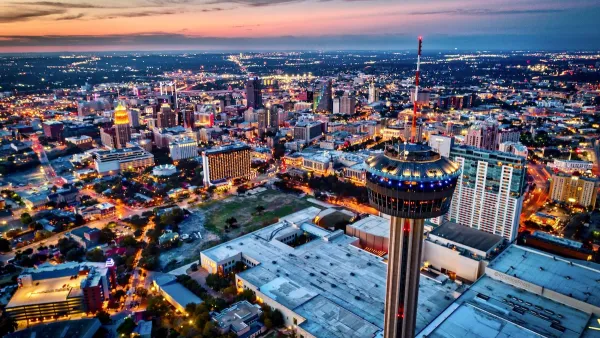Mike Davis reminds us that during World War II, recycling, conservation, car-pooling, bicycling and growing your own food were considered patriotic.
"In the 1940s, Americans simultaneously battled fascism overseas and waste at home. My parents, their neighbors, and millions of others left cars at home to ride bikes to work, tore up their front yards to plant cabbage, recycled toothpaste tubes and cooking grease, volunteered at daycare centers and USOs, shared their houses and dinners with strangers, and conscientiously attempted to reduce unnecessary consumption and waste. The World War II home front was the most important and broadly participatory green experiment in U.S. history. Lessing Rosenwald, the chief of the Bureau of Industrial Conservation, called on Americans "to change from an economy of waste--and this country has been notorious for waste--to an economy of conservation." A majority of civilians, some reluctantly but many others enthusiastically, answered the call.
The war also temporarily dethroned the automobile as the icon of the American standard of living. Detroit assembly lines were retooled to build Sherman tanks and B-24 Liberators. Gasoline was rationed and, following the Japanese conquest of Malaya, so was rubber. (The U.S. Office of the Rubber Director was charged with getting used tires to factories, where they became parts for tanks and trucks.) When shortages and congestion brought streetcar and bus systems across the country near the breaking point, it became critical to induce workers to share rides or adopt alternative means of transportation. Car sharing was reinforced by gas-ration incentives, stiff fines for solo recreational driving, and stark slogans: 'When you ride ALONE,' warned one poster, 'you ride with Hitler!'
There was [also] remarkable consistency in the observation of journalists and visitors (as well as in later memoirs) that the combination of a world crisis, full employment, and mild austerity seemed to be a tonic for the American character. New York Times columnist Samuel Williamson, for example, monitored the impacts of rationing and restricted auto use on families in commuter suburbs that lacked 'the self-sufficiency of the open country' and the 'complete integration of the large city.' After noting initial popular dismay and confusion, Williamson was heartened to see suburbanites riding bikes, mending clothes, planting gardens, and spending more time in cooperative endeavors with their neighbors. Without cars, people moved at a slower pace but seemed to accomplish more. Like Welles in The Magnificent Ambersons, Williamson pointed out that American life had been revolutionized in a single generation and many good things seemingly lost forever; the war and the emphasis on conservation were now resurrecting some of the old values."
FULL STORY: Home-Front Ecology

Planetizen Federal Action Tracker
A weekly monitor of how Trump’s orders and actions are impacting planners and planning in America.

Chicago’s Ghost Rails
Just beneath the surface of the modern city lie the remnants of its expansive early 20th-century streetcar system.

San Antonio and Austin are Fusing Into one Massive Megaregion
The region spanning the two central Texas cities is growing fast, posing challenges for local infrastructure and water supplies.

Since Zion's Shuttles Went Electric “The Smog is Gone”
Visitors to Zion National Park can enjoy the canyon via the nation’s first fully electric park shuttle system.

Trump Distributing DOT Safety Funds at 1/10 Rate of Biden
Funds for Safe Streets and other transportation safety and equity programs are being held up by administrative reviews and conflicts with the Trump administration’s priorities.

German Cities Subsidize Taxis for Women Amid Wave of Violence
Free or low-cost taxi rides can help women navigate cities more safely, but critics say the programs don't address the root causes of violence against women.
Urban Design for Planners 1: Software Tools
This six-course series explores essential urban design concepts using open source software and equips planners with the tools they need to participate fully in the urban design process.
Planning for Universal Design
Learn the tools for implementing Universal Design in planning regulations.
planning NEXT
Appalachian Highlands Housing Partners
Mpact (founded as Rail~Volution)
City of Camden Redevelopment Agency
City of Astoria
City of Portland
City of Laramie


























